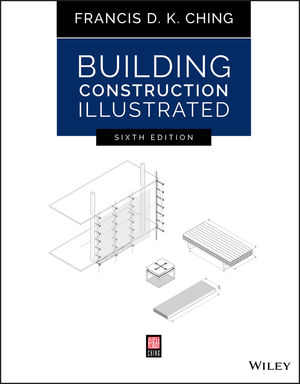If structural engineers have their way, building codes will take a leap forward in the next couple of years to allow the use of higher-strength 80-ksi reinforcing steel in concrete shear walls in high seismic zones. The codes currently only allow 80-ksi rebar for nonseismic applications.
The code update, which would help structural engineers reduce rebar congestion in seismic-zone shear walls, would be based on the positive results of tests on walls with 100-ksi rebar, performed recently at the University of Kansas.
The tests demonstrated that shear walls reinforced with 100-ksi rebar can withstand very large lateral deformations without significant strength loss.
Results from the Kansas study will provide a basis for defining the acceptable mechanical properties in specifications of high-strength rebar.
Performance Properties
By testing the cyclic response of asymmetric concrete walls reinforced with 100-ksi bars, the researchers determined the required tensile and performance properties for higher-strength rebar in the walls. The data is “essential” for the use of high-strength rebar in slender concrete walls, say the authors of the 311-page report on the tests, released on Jan. 2.
The report, named “High-Strength Steel Bars in Reinforced Concrete Walls: Influence of Steel Mechanical Properties on Deformation Capacity,” was co-authored by researchers in the Dept. of Civil, Environmental and Architectural Engineering at the university’s Lawrence campus. Co-authors are Sajed Huq, Alexander S. Weber-Kamin, Shahedreen Ameen, and the co-lead investigators, Remy D. Lequesne and Andres Lepage.
The American Concrete Institute’s ACI-318 standard-writing committee, spearheaded by ACI subcommittee 318R, is using the data from the research program, conducted from 2014 to 2017, to support an increase in the allowable limit on reinforcement grade in shear walls in high seismic zones—seismic design categories D, E and F. The current code change proposal under consideration by the ACI-318 committee is for an increase in the limit from 60 ksi to 80 ksi.
If the proposal is adopted, the change would be included in the 2019 version of ACI 318, to be adopted by reference by the 2020 International Building Code, says David C. Fields, one of the practicing structural engineers involved with the research, mainly funded by a $112,000 grant from the Charles Pankow Foundation. Fields is a senior principal with Magnusson Klemencic Associates.
The primary aim of the study was to determine the minimum uniform elongation required of high-strength rebar used in seismic applications. Tests determined the minimum tensile/yield stress ratio for the bars so that code-targeted system ductility is achieved, says Fields.
Flanged-Wall Specimens
Because of their geometry, tests of flanged walls are critical for evaluating the reinforcement strain capacity needed to ensure that earthquake-resistant structures have acceptable drift capacity, say the researchers.
In the tests, researchers subjected large-scale T-in-plan shaped reinforced concrete walls, 30 ft tall, to reversed cyclic displacement. Specimens included four walls—one with conventional 60-ksi rebar and the other three with 100-ksi rebar.
The research project stems from the Applied Technology Council’s ATC 115 project—Development of a Roadmap on Use of High-Strength Reinforcement in Reinforced Concrete Design. The roadmap project also includes beam research, recently concluded, at the University of California, Berkeley, and ongoing column research at the University of Texas, Austin. The Kansas and Berkeley reports are available for free download on www.Pankowfoundation.org.
Prior to the Kansas research, studies had focused on beams and columns, not walls. In the wall tests, “grade-100 walls exhibited very similar performance to grade-60 walls,” says Andres Lepage, a Kansas professor of civil engineering.
Lequesne, also a Kansas professor of civil engineering, adds, “The aim for the future is to change the code to allow 100-ksi reinforcing steel for seismic applications, but more research needs to be done before we are comfortable” proposing that code change.









